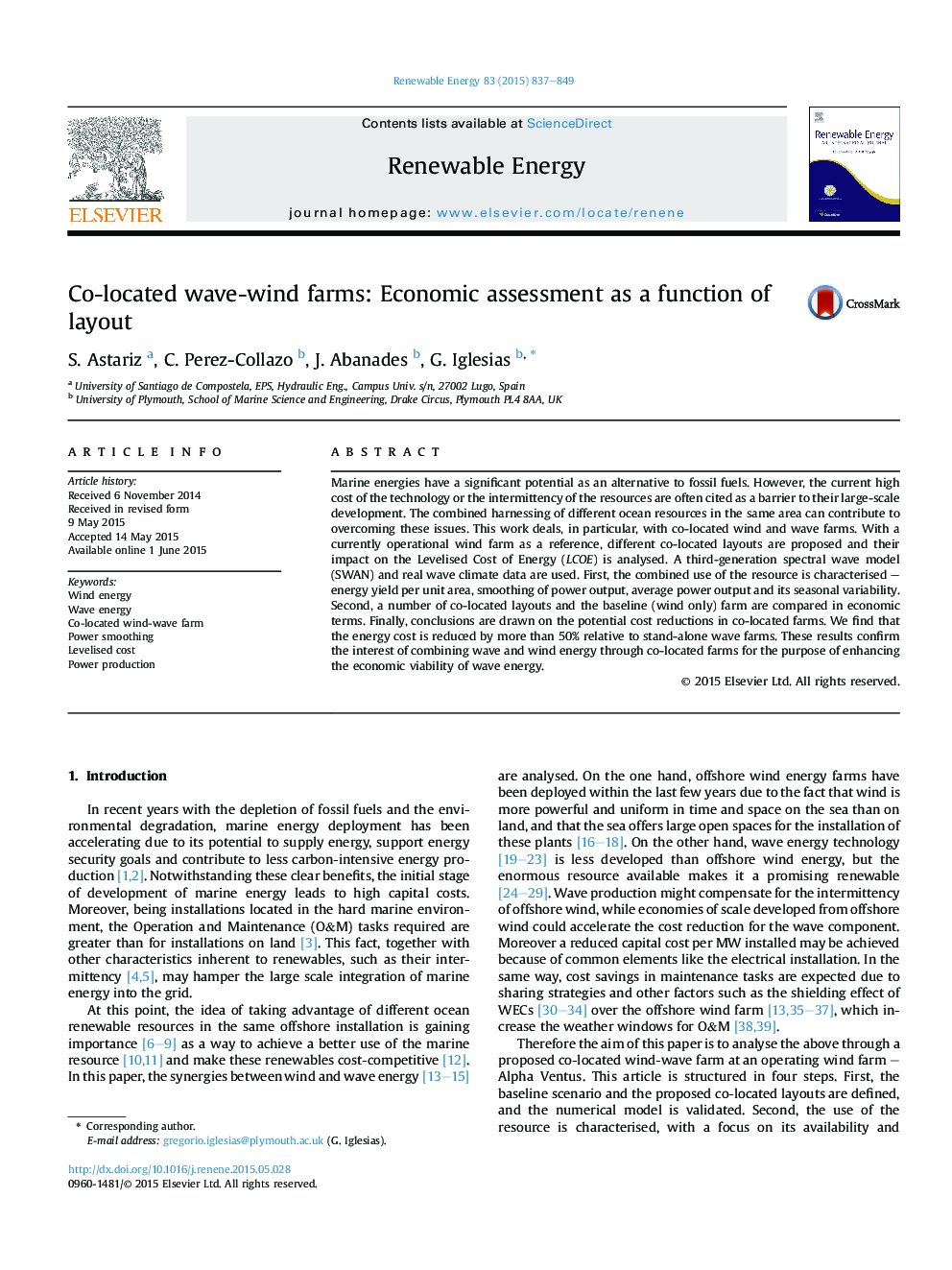| Article ID | Journal | Published Year | Pages | File Type |
|---|---|---|---|---|
| 6767352 | Renewable Energy | 2015 | 13 Pages |
Abstract
Marine energies have a significant potential as an alternative to fossil fuels. However, the current high cost of the technology or the intermittency of the resources are often cited as a barrier to their large-scale development. The combined harnessing of different ocean resources in the same area can contribute to overcoming these issues. This work deals, in particular, with co-located wind and wave farms. With a currently operational wind farm as a reference, different co-located layouts are proposed and their impact on the Levelised Cost of Energy (LCOE) is analysed. A third-generation spectral wave model (SWAN) and real wave climate data are used. First, the combined use of the resource is characterised - energy yield per unit area, smoothing of power output, average power output and its seasonal variability. Second, a number of co-located layouts and the baseline (wind only) farm are compared in economic terms. Finally, conclusions are drawn on the potential cost reductions in co-located farms. We find that the energy cost is reduced by more than 50% relative to stand-alone wave farms. These results confirm the interest of combining wave and wind energy through co-located farms for the purpose of enhancing the economic viability of wave energy.
Keywords
Related Topics
Physical Sciences and Engineering
Energy
Renewable Energy, Sustainability and the Environment
Authors
S. Astariz, C. Perez-Collazo, J. Abanades, G. Iglesias,
